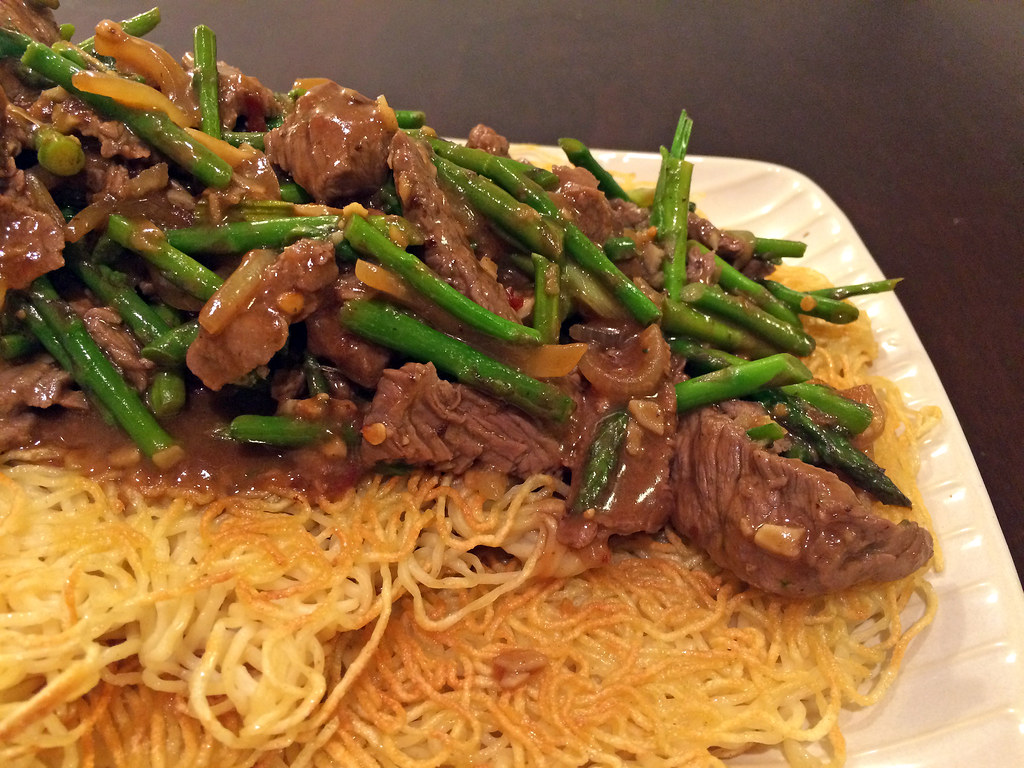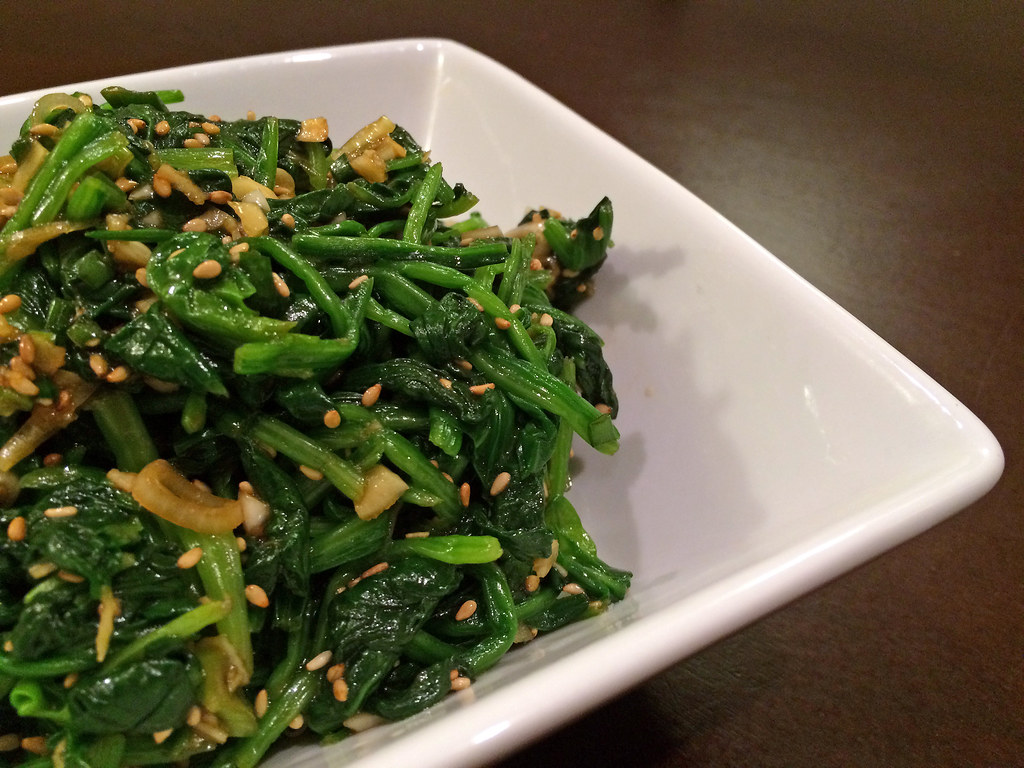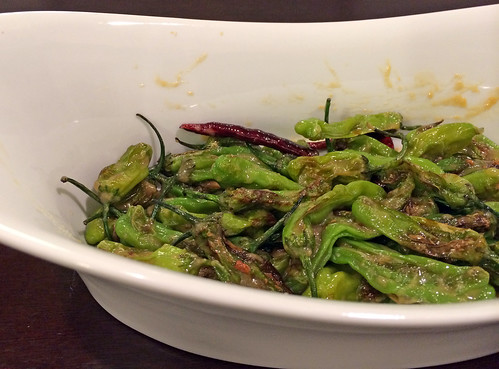I’ve been making this dish since I was a teenager. I can’t even remember the source anymore, and over the years, it’s changed from the original recipe to something entirely anew. But it remains one of my favorite things to cook and eat. The Hong Kong-style crispy noodles soak up the spicy, savory sauce oh so wonderfully. The meat is tender. The vegetables are crisp. This dish, my friends, hits all the right notes.
It may take a while to cook, but the results are well worth it. The leftovers won’t last nearly as long as you think they will. Consider yourself warned.
1 tablespoon Chinese rice wine
1 tablespoon soy sauce
3 teaspoons cornstarch
1 teaspoon garlic
1 teaspoon ginger
1 lb sirloin beef or flank steak, sliced thin
1/4 cup chicken broth
2 tablespoons oyster sauce
1 teaspoon chili-garlic sauce
2 teaspoons cornstarch
1/8 teaspoon pepper
1/8 teaspoon sesame oil
8 ounces fresh thin Chinese egg noodles
1/2 onion, thinly sliced
1 pound asparagus, trimmed and cut into 1 inch pieces
1. Marinade beef: stir rice wine, soy, 1 1/2 teaspoons cornstarch, garlic and ginger in a large bowl. Add beef to marinade.
2. In a separate bowl, mix chicken broth, oyster sauce, chili garlic sauce, remaining 1 1/2 teaspoons cornstarch, pepper and sesame oil together. Set aside.
3. Cook noodles in large pot, according to directions. Drain, rinse under cold water, drain again.
4. Heat nonstick skillet over medium-high heat. Add 1 tablespoon of oil and coat. Spread noodles evenly and cook, pressing lightly from time to time to form a cake, until bottom is golden brown, about 5 minutes. Turn cake over. Drizzle one tablespoon oil on bottom and cook other side, about 5 minutes. Transfer to plate.
5. Heat wok over high heat and add remaining tablespoon of oil. Add meat and stir fry until cooked through and no longer pink. Remove from wok. Add onion to wok and stir fry for two minutes. Add asparagus and cook for four minutes.
6. Return meat to wok, pour in sauce and bring to boil. Cook until slightly thickened, about two minutes. Spoon over noodle pancake and serve.





